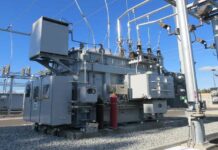With increasingly smart, digitally-connected building energy management systems, GE Research, the technology development arm for the General Electric Company , is partnering with Pacific Northwest National Laboratory (PNNL) on a three-year, $4.1 million project through the U.S. Department of Energy’s (DOE) Office of Energy Efficiency & Renewable Energy to safeguard commercial building systems from cyberattacks and system faults.
“With more than 75% of electricity consumption in the US coming from buildings, the digitization and automation of building control systems offers tremendous opportunities to create a more sustainable energy footprint,” said Mustafa Dokucu, a Senior Engineer in the Controls and Optimization Group at GE Research and project leader. “But with greater sustainability must follow higher degrees of security to safeguard building energy management systems from increasing cyber threats. That’s what we’re aiming to address through this project.”
a central feature of greener commercial buildings are advanced digital controls and sensing technologies that are helping to achieve energy savings as high as 20%. This savings comes from more efficient use of heating, ventilation and cooling systems (HVAC), lighting and other appliances. For example, the use of these systems can be much more finely tuned to factors such as occupancy rates.
Dokucu says the GE/PNNL team are focused building more resiliency into these systems by combining AI, reinforcement learning and advanced controls. For instance, if a portion of energy management system becomes compromised by a cyber fault, the technology being developed would enable the system to adapt itself to operate reliably through this fault. Another key feature being developed is to differentiate regular system faults from faults triggered by a cyberattack.
Dokucu said, “We want to enable the building’s energy management system to recognize not only when and where a fault is occurring, but also whether it is the result of a cyberattack. It can be difficult to discern, unless you can pinpoint the source of a system fault. This is what we’re designing our automated cyber solution to be able to do.”
GE Research, which already is driving cutting-edge cyber-technology advancements upstream to rapidly detect, isolate and mitigate cyber threats in power plants with its Digital Ghost platform, is planning to apply these same features to protect commercial building systems. PNNL brings unique and deep domain experience in building systems, which will help design the most effective digital architecture for safeguarding these systems.
“We can now learn building behavior using data driven methods conditioned by domain awareness. Our framework will allow characterization of failure and cyber-attack dynamics as well as differentiate between the two.” said Draguna Vrabie, a Chief Scientist in the Data Sciences Group at PNNL. “As building systems are adding functionality beyond energy efficiency to enable revenue streams and become earnest active participants in the power grid operation, proactive cyber protection is of vital importance. We have to rethink building controls and build in robustness and resilience.”
A key goal of the project is to design and demonstrate a resilient building control system architecture that can detect and localize cyber attacks or system faults at 99% accuracy. In addition, they aim to show that this architecture can automatically shift to a more resilient safe mode of operation in the event a cyberattack or system fault occurs.
About GE Research
GE Research is GE’s innovation powerhouse where research meets reality. We are a world-class team of scientific, engineering and marketing minds working at the intersection of physics and markets, physical and digital technologies, and across a broad set of industries to deliver world-changing innovations and capabilities for our customers. To learn more, visit our website at https://www.ge.com/research/.
About Pacific Northwest National Laboratory
Pacific Northwest National Laboratory draws on signature capabilities in chemistry, earth sciences and data analytics to advance scientific discovery and create solutions to the nation’s toughest challenges in energy resiliency and national security. Founded in 1965, PNNL is operated by Battelle for the U.S. Department of Energy’s Office of Science.




























